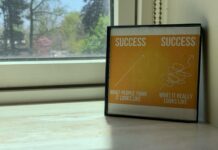The importance of listening to facts and statistics, rather than hearsay and anecdotes, in a world dominated by gossip journalism and flashy headlines, cannot be overstated enough. When the world is facing a crisis of the caliber of a pandemic, the way it is today, there is no better way for people to take control of the situation than to be as informed as possible. Information and education lead to the formation of a strong understanding of a situation and, in situations such as these, can be the difference between life and death.
It shouldn’t take a global crisis to drive people to be informed, however. It is just as important to recognize the facts of everyday life so that one is able to form educated opinions on various topics in everyday life. For example, take vices such as drinking and smoking. Many people have heard stories of someone’s grandfather who smoked a pack and drank a fifth a day. However, stories like this don’t change the fact that in reality, Smoking accounts for 80% of lung cancer deaths in women and 90% in men. Knowing one person who drank a liter of liquor a day until they were 100 doesn’t take away from the fact that 88,000 people die of alcohol-related incidents each year, in the US.
Image via Pixabay
The current pandemic facing the global community is at the forefront of all of our minds. It is a time of uncertainty and a certain level of fear of the unknown. There are many stories coming out that are tragic in themselves, however, they may draw worry and concern away from places that that same concern could have been better spent. Stories, such as the death of a fully healthy 30-year-old, while tragic, may put a certain level of unfounded fear and anxiety in readers. In reality, the fatality rate for those diagnosed with COVID-19, under the age of 40 is 0.2%. So while these anecdotal stories can hold value in that they draw attention to important issues, it is important to understand that they can’t be used as a way to decide how to behave. It is better to form opinions and change your behavior based on data and facts.
This is often easier said than done, however. At times, it feels almost impossible to avoid shocking headlines that can make one feel as though the tragedy they are reading about is certain, or that scientists must be inflating their research because ‘that’s not what happened in this article.’ If one understands how to sort through inform themselves, and not rely on a third party to inform them, one can avoid any fluff pieces and otherwise misleading pieces of content. In reality, if you know where to look, what to read, you can cut out the middle man and having to sort through the articles talking about a one in a million event, and understand the facts as they are, and form opinions based on those facts.
It is important to understand that in situations like these, the general public has access to the same sources that journalists and newspapers do. That is scientific papers, studies, and journals. It may seem intimidating, but do not be afraid to approach these papers as if you were reading research for a school paper. Many of us have experience in doing research for projects and reports, and I think many will find how comfortable you will be when presented with an abstract, or an introduction and summary to a scientific paper.

Image via CDC
Flashy stories dominate the news cycle and can easily bury important information. Don’t let it. Stay informed, and make smart decisions based on that information. There is no better way for people to take control of the situation than to be as informed as possible. Information and education lead to the formation of a strong understanding of a situation and, in situations such as these, can be the difference between life and death.








